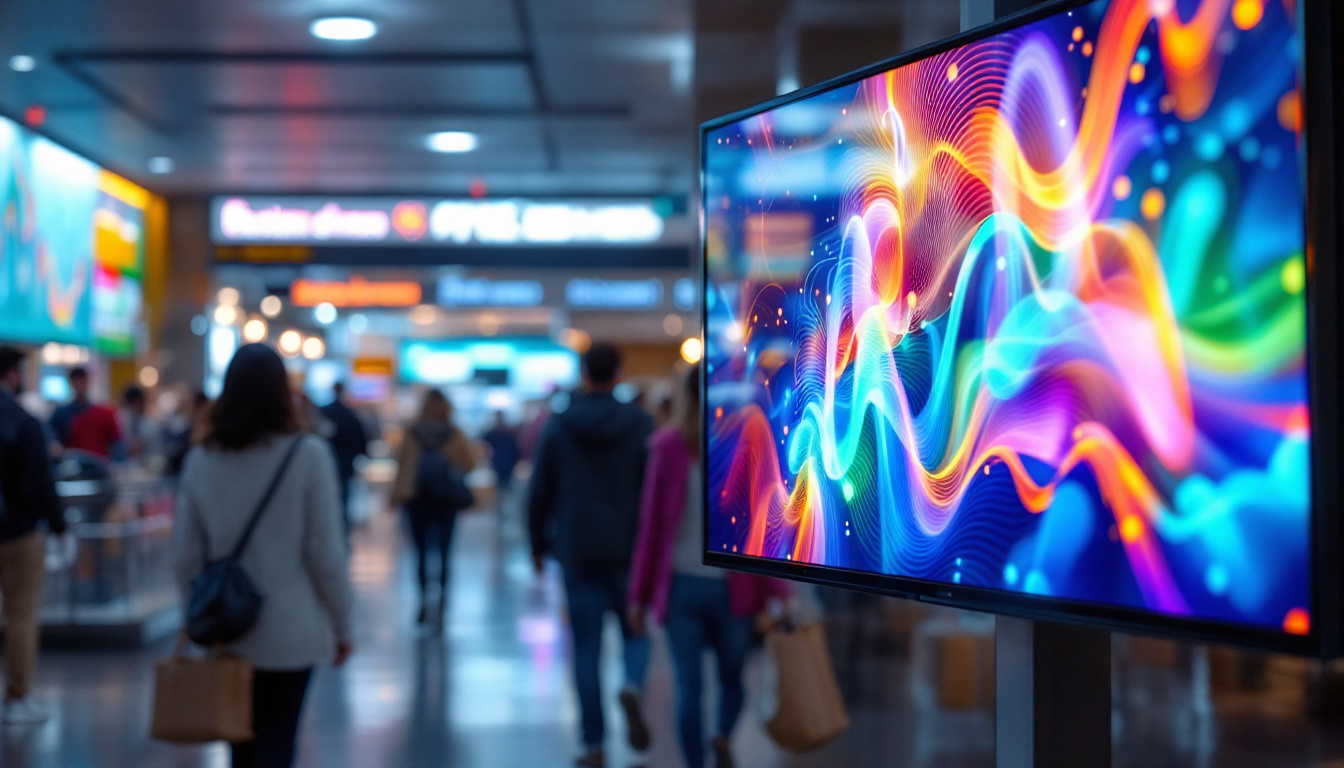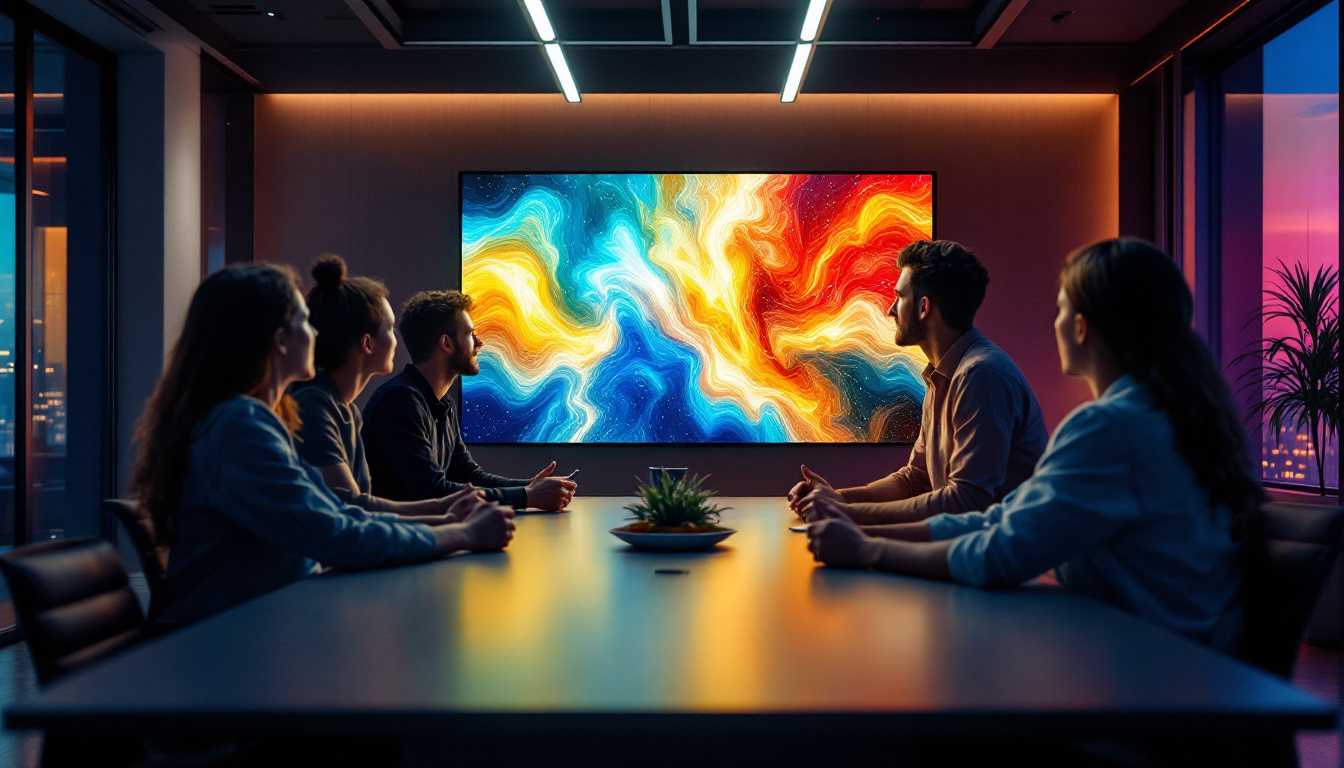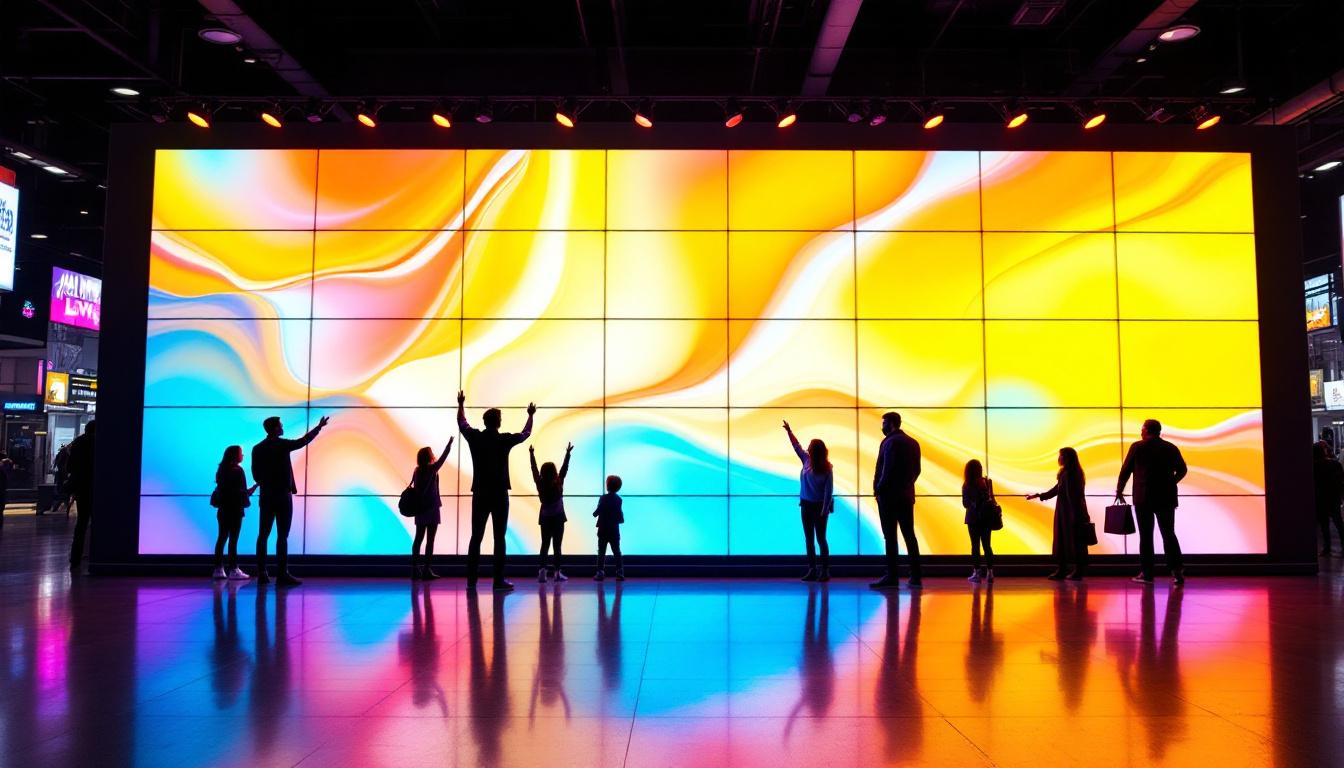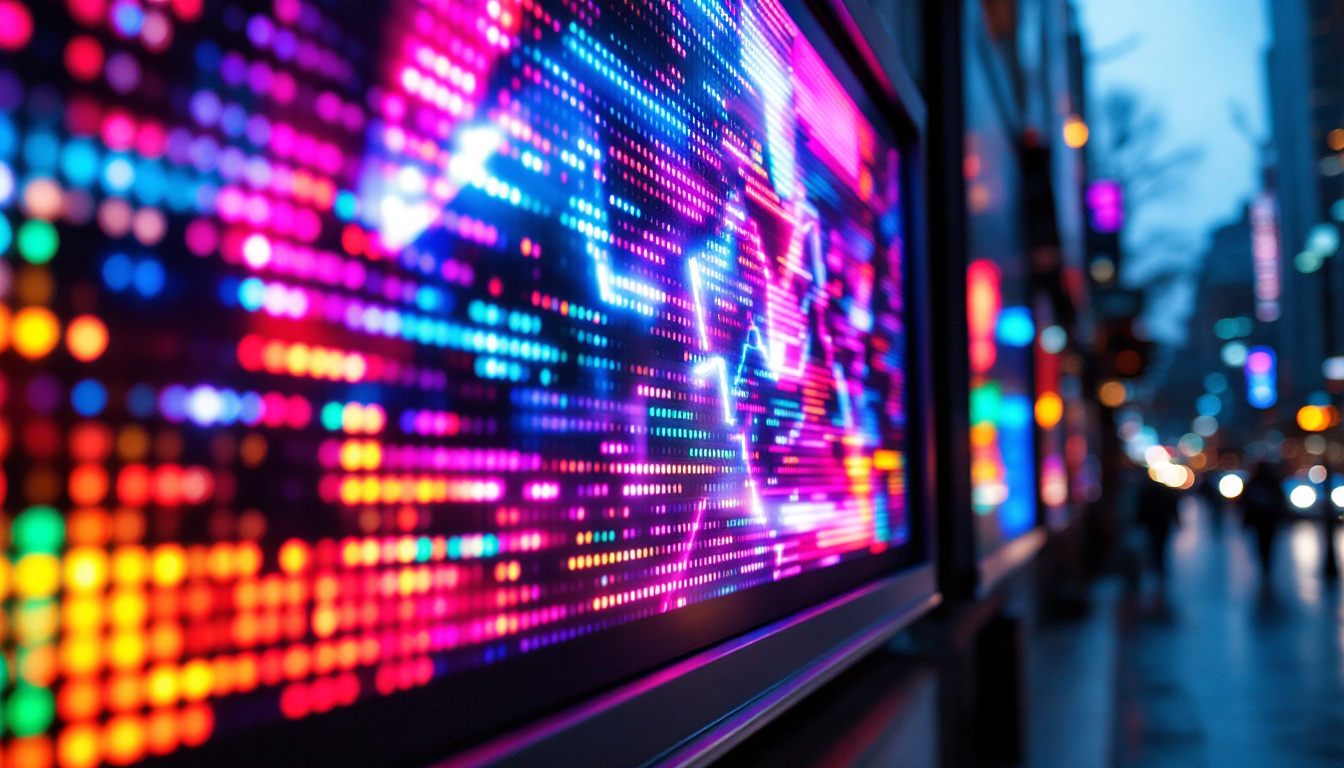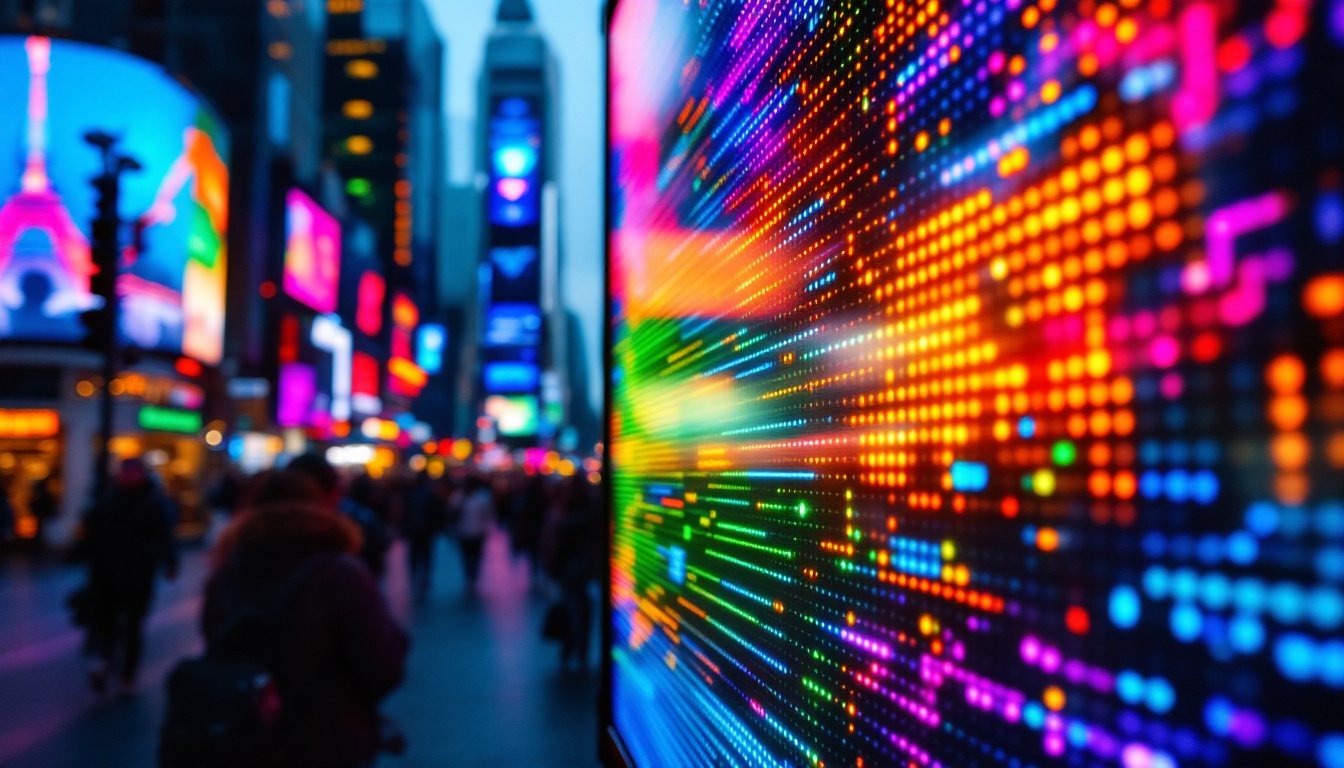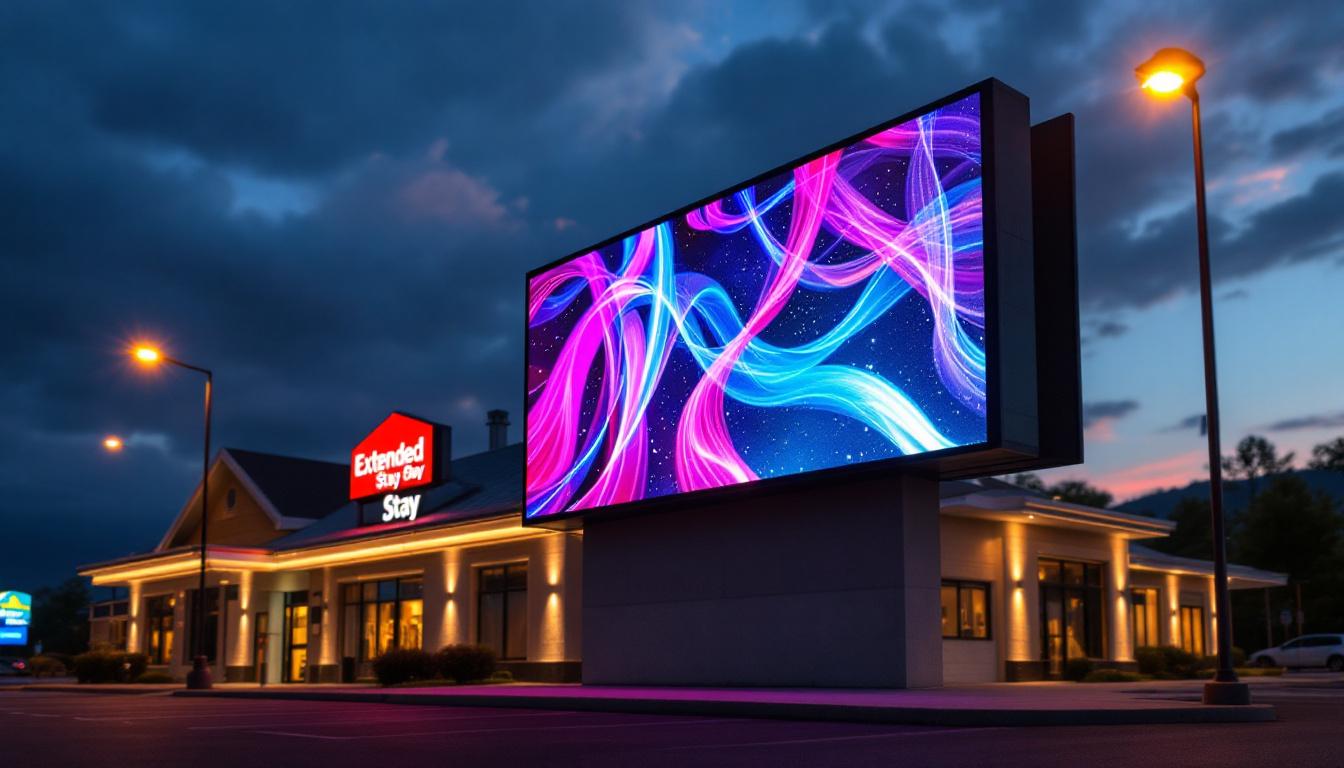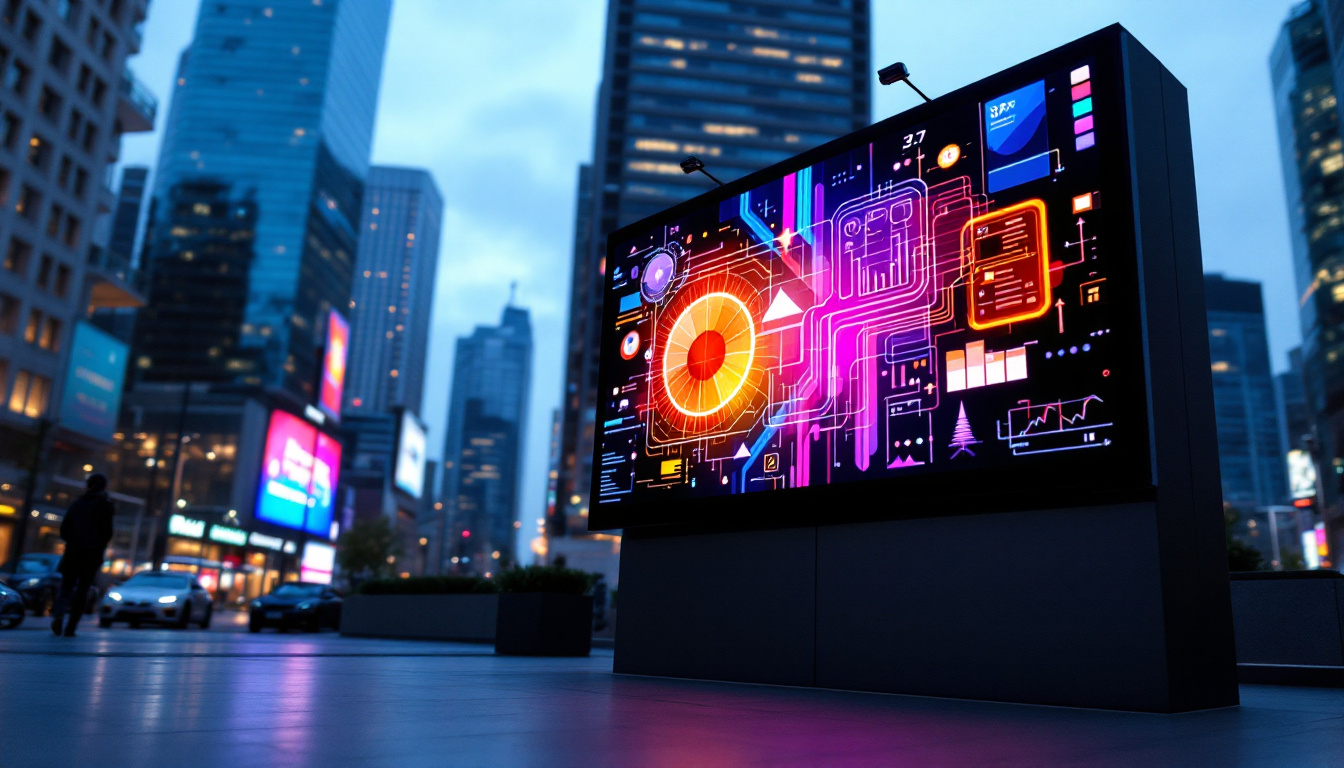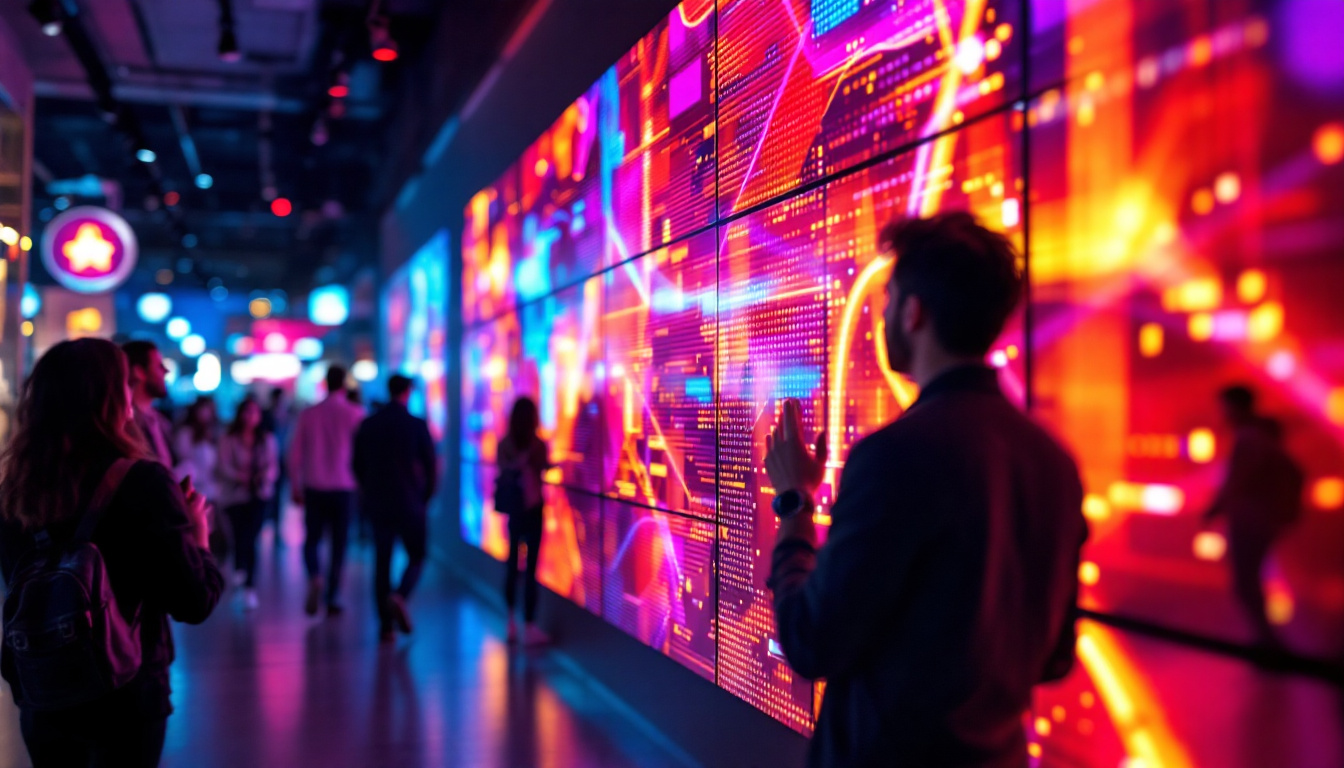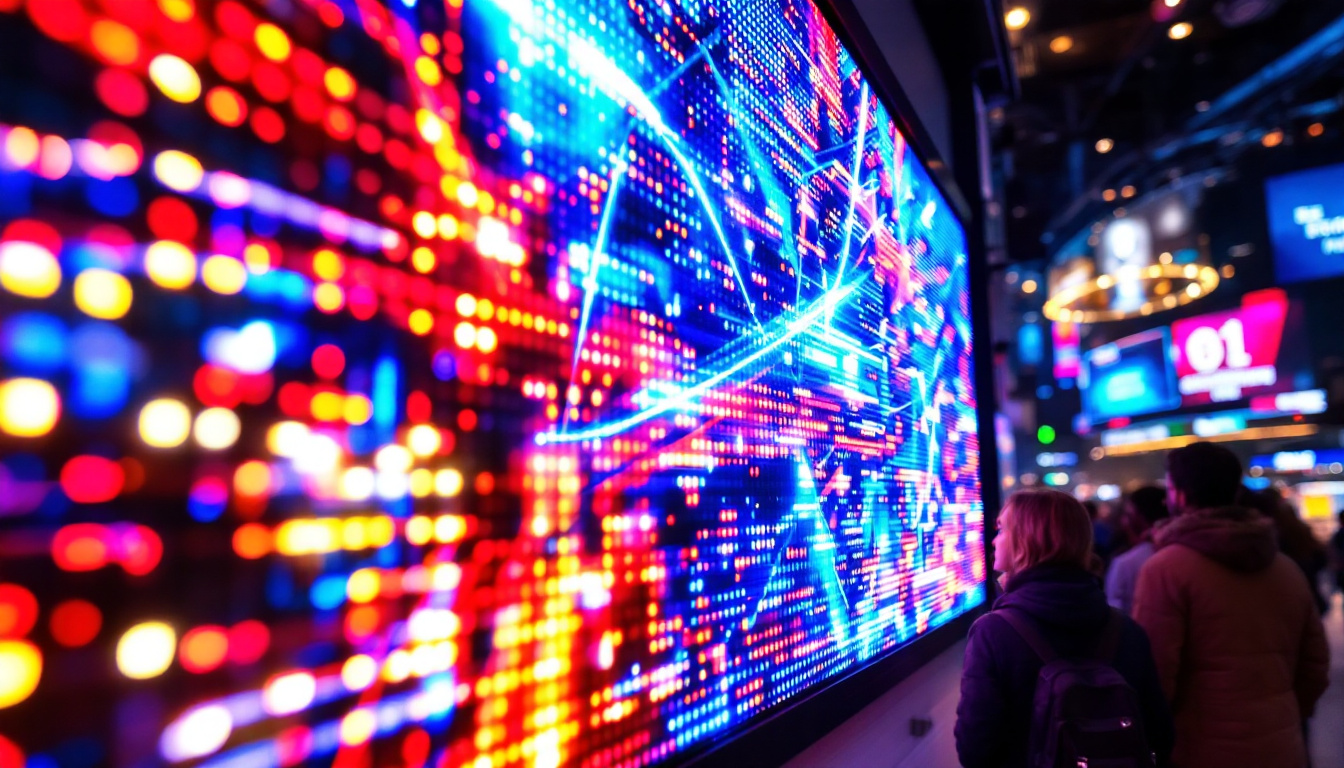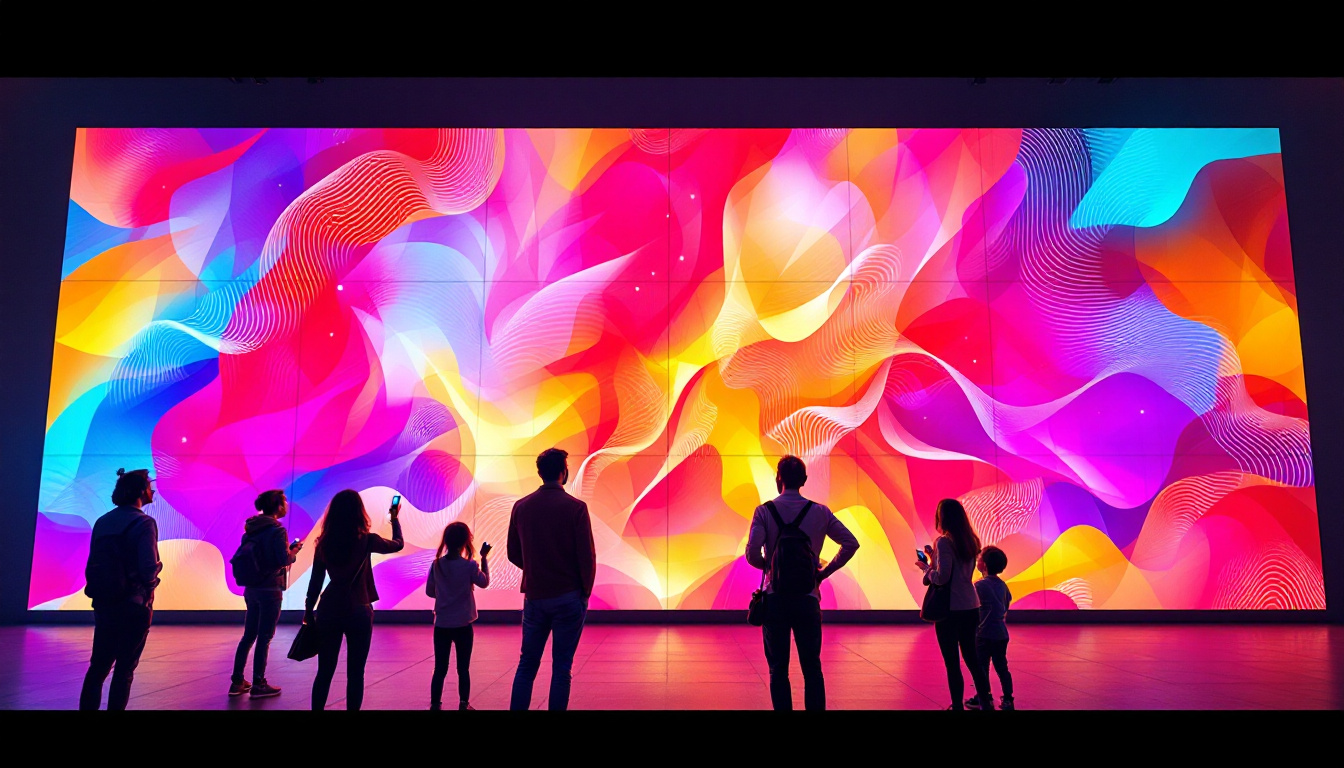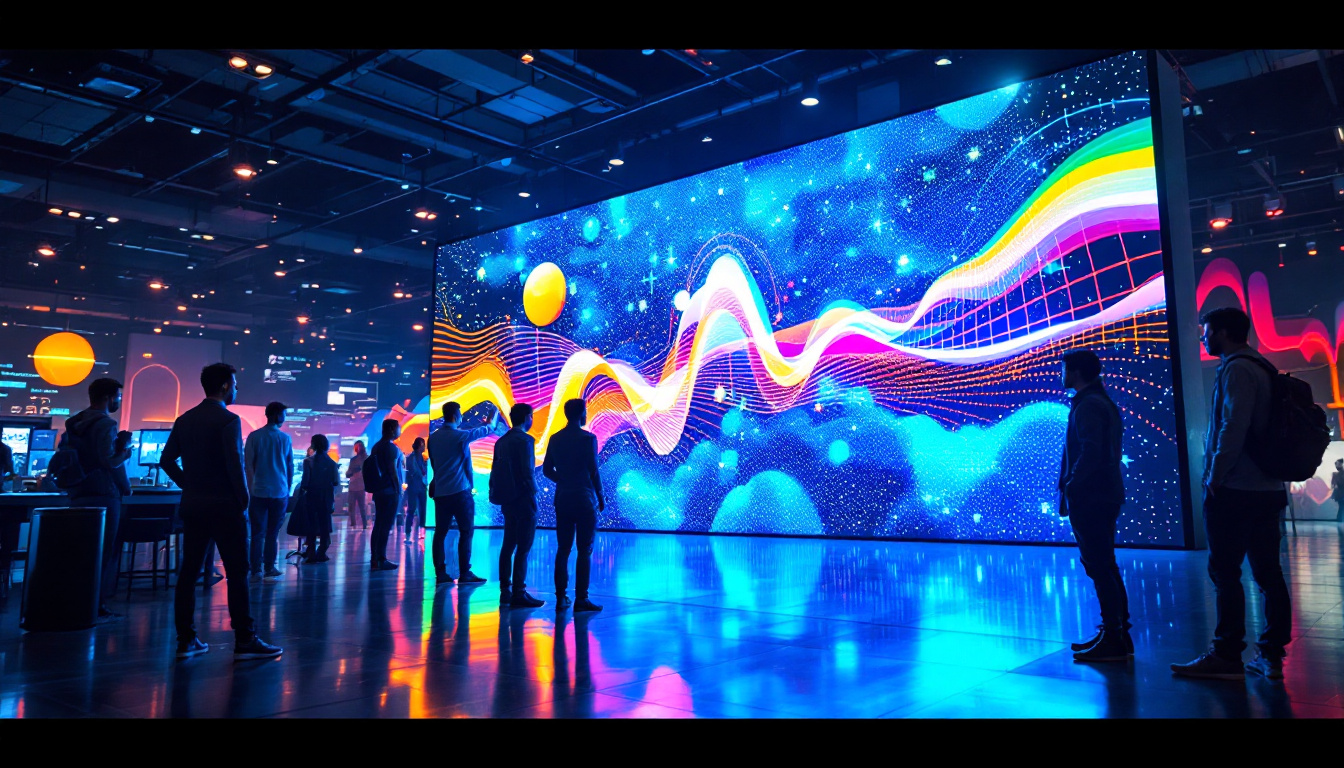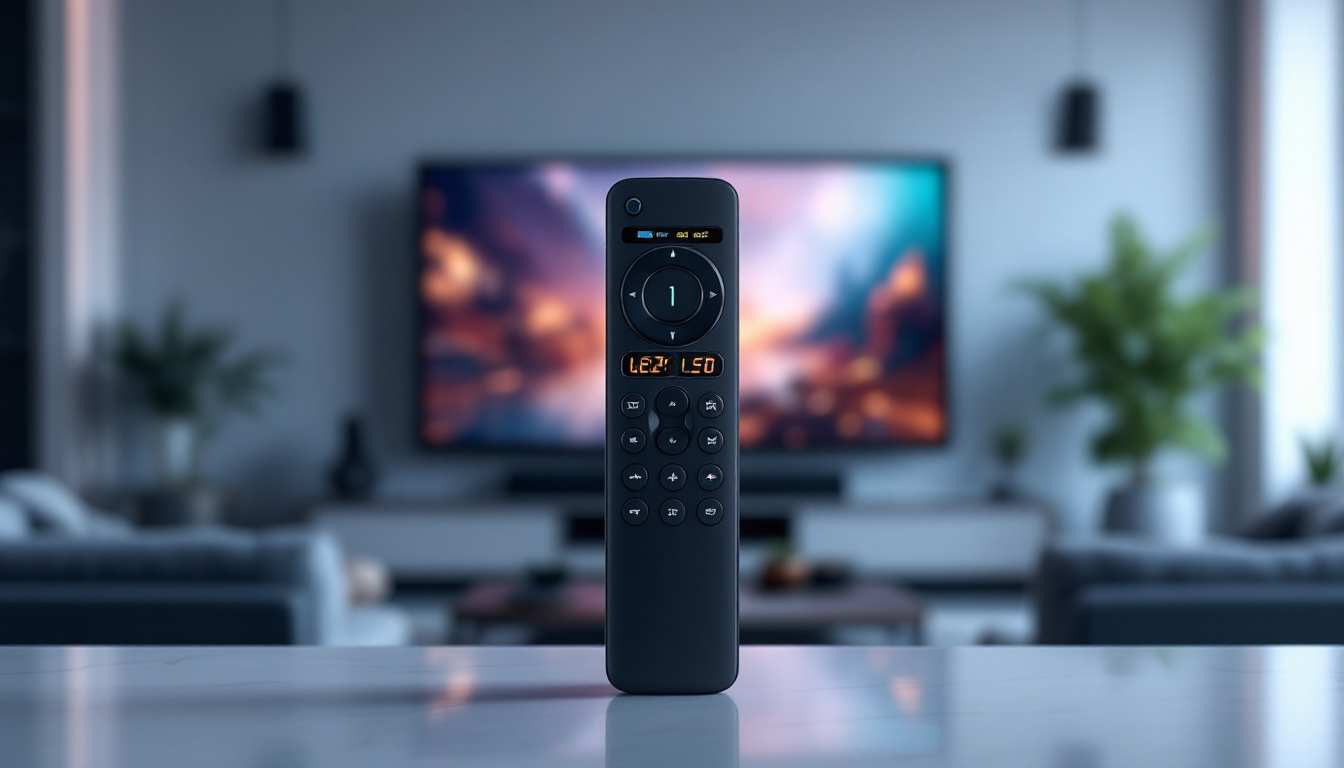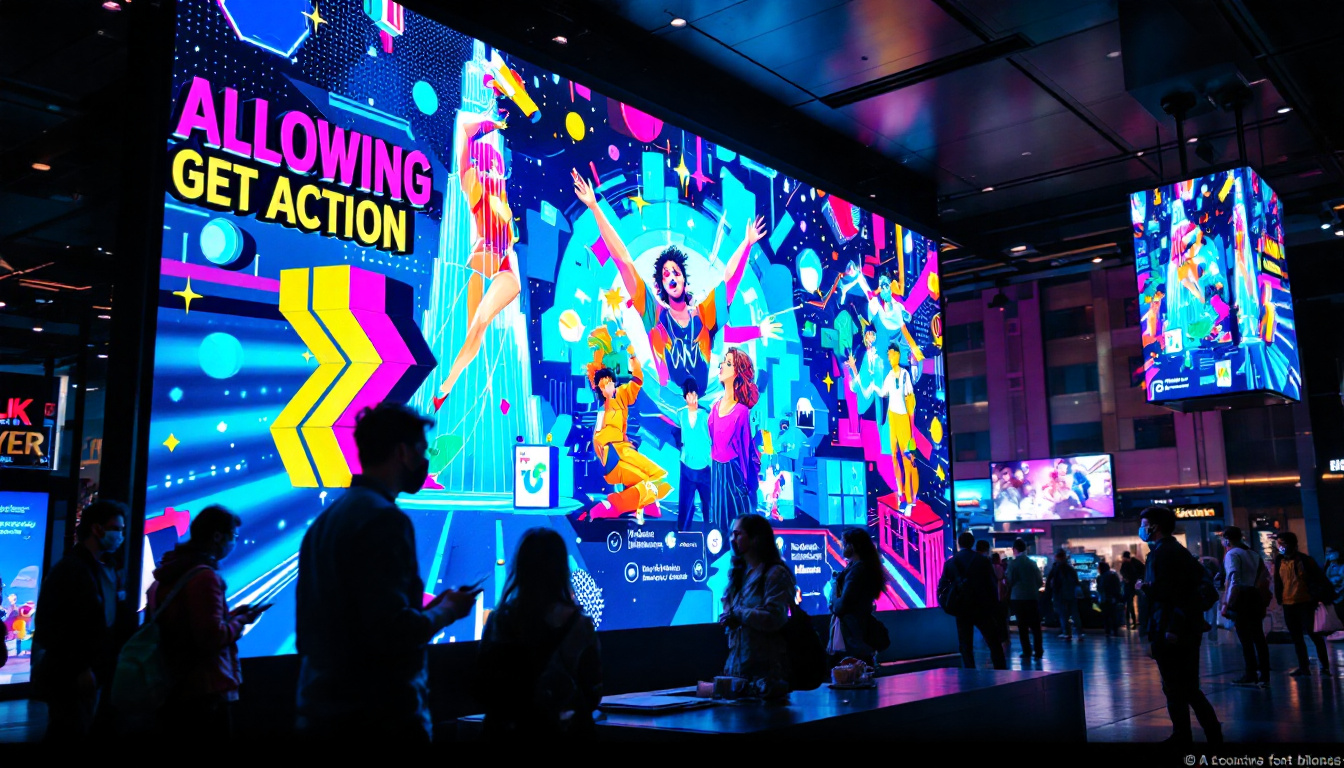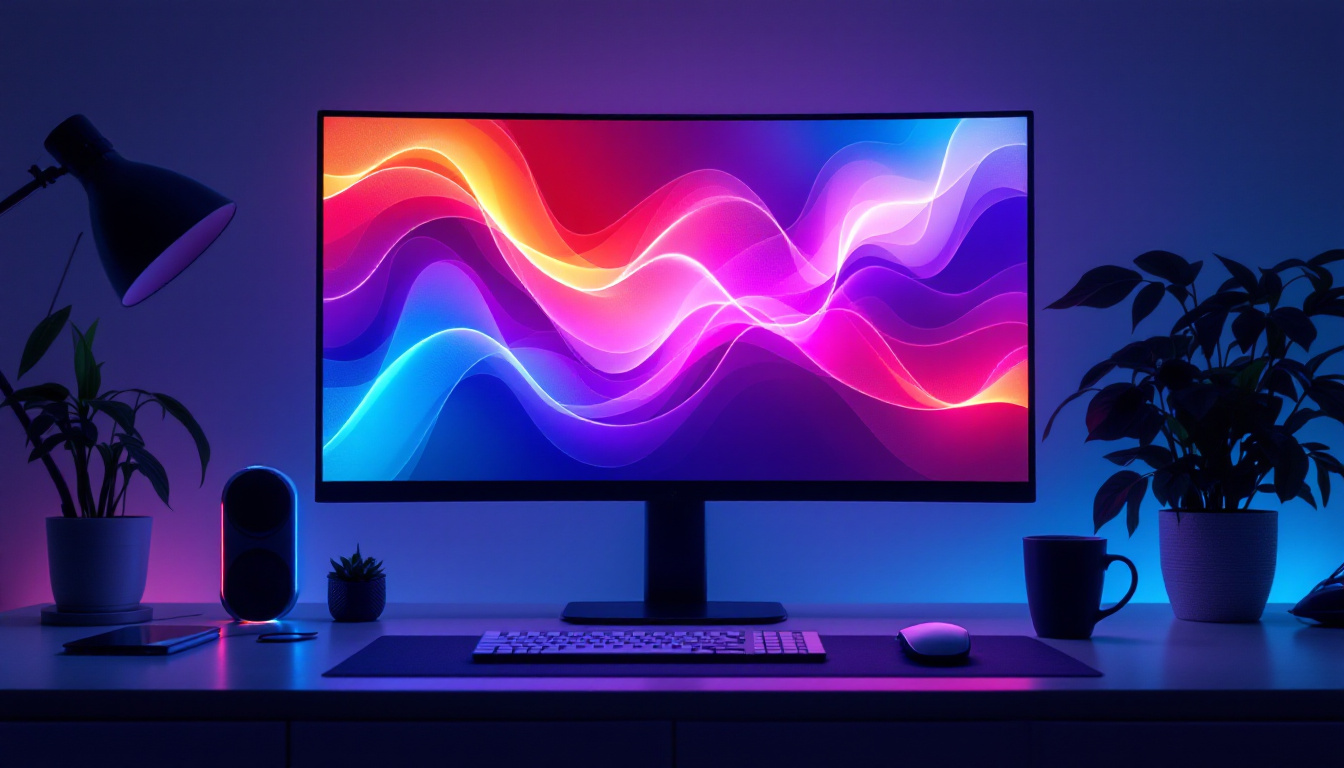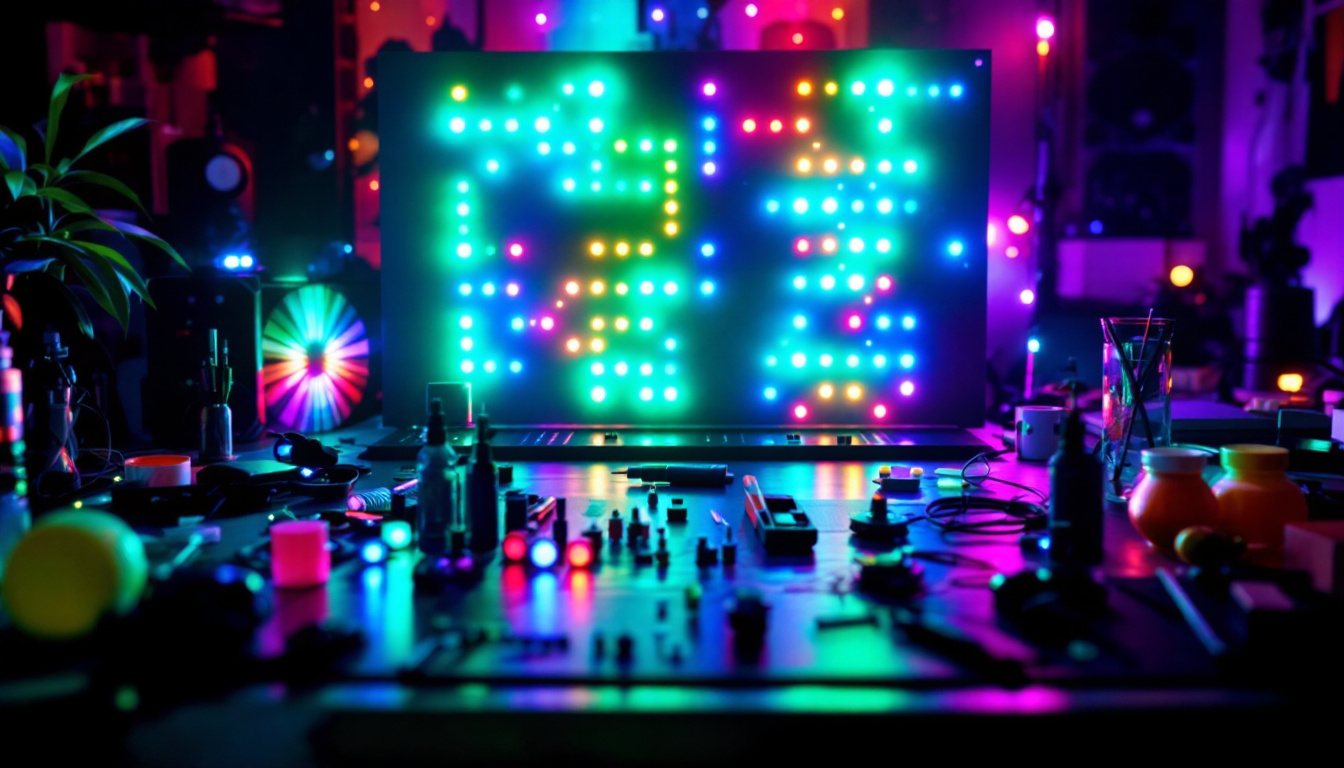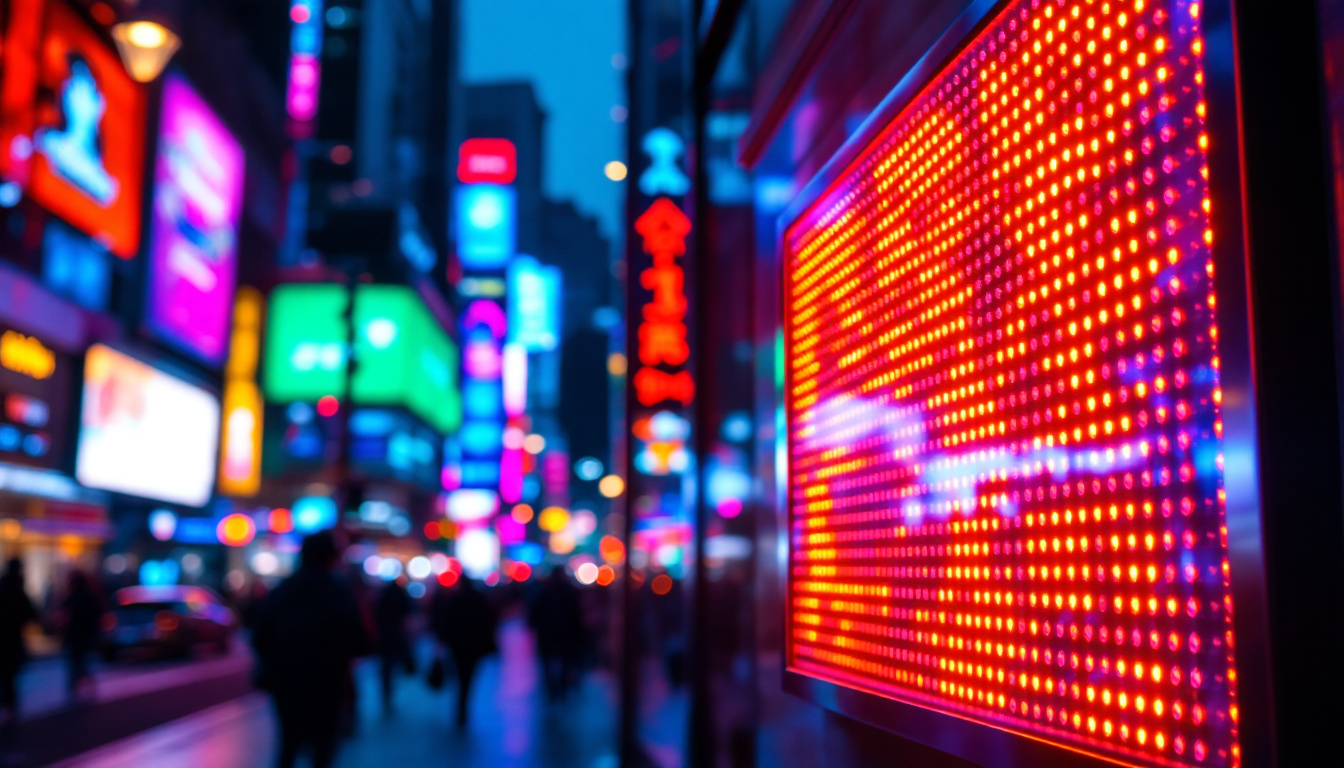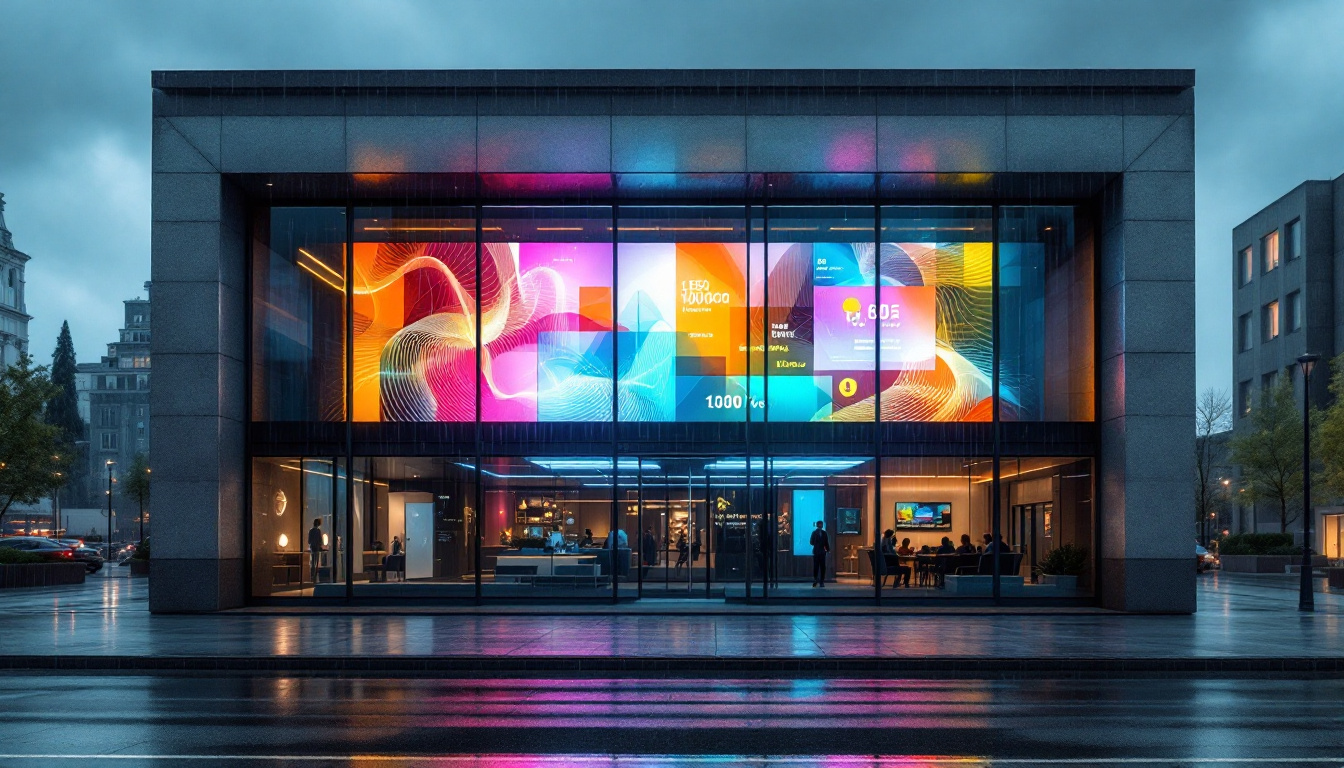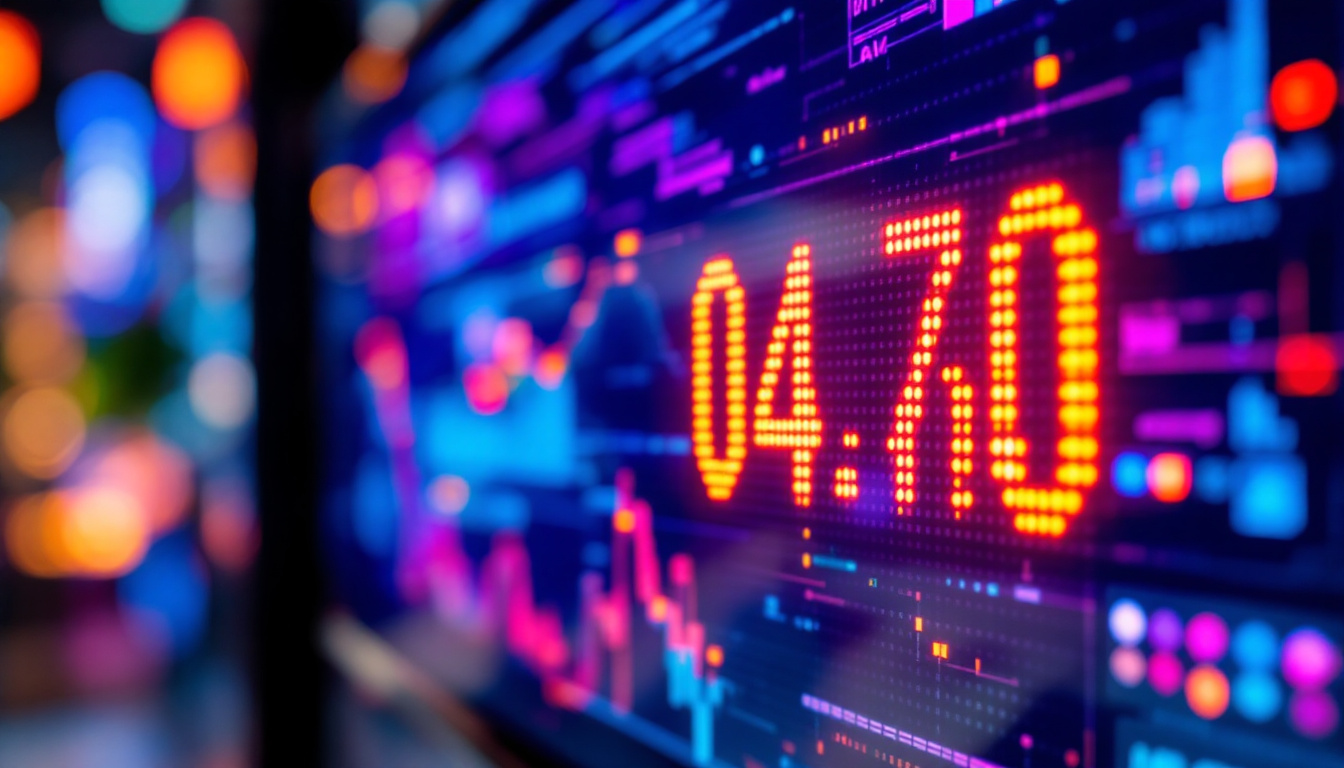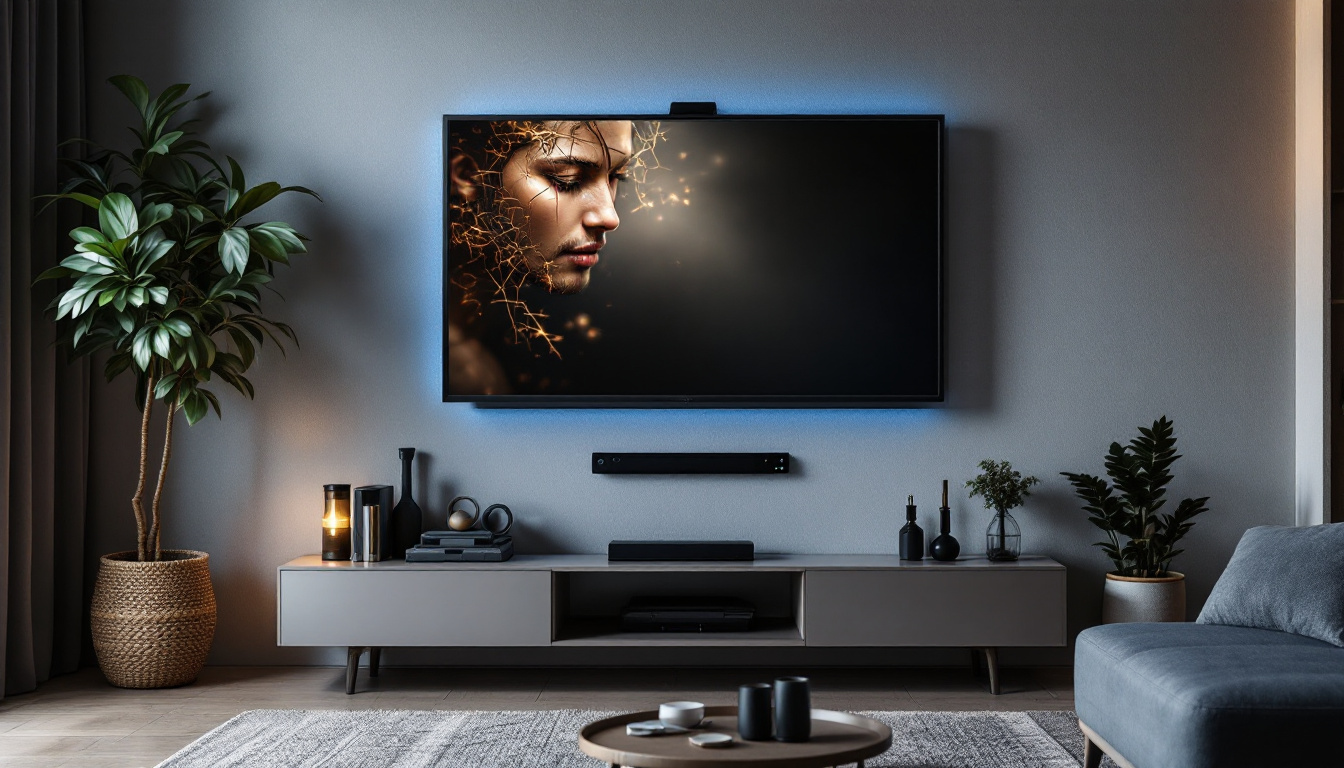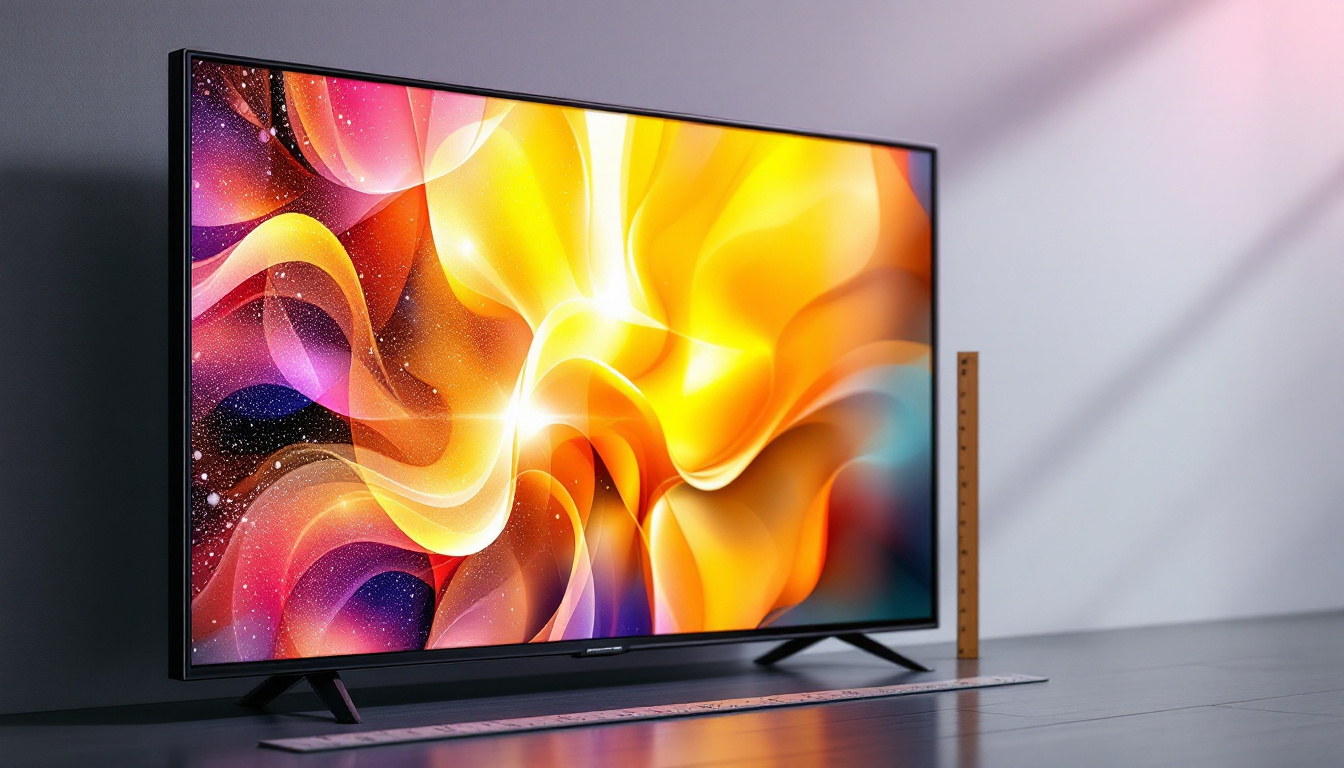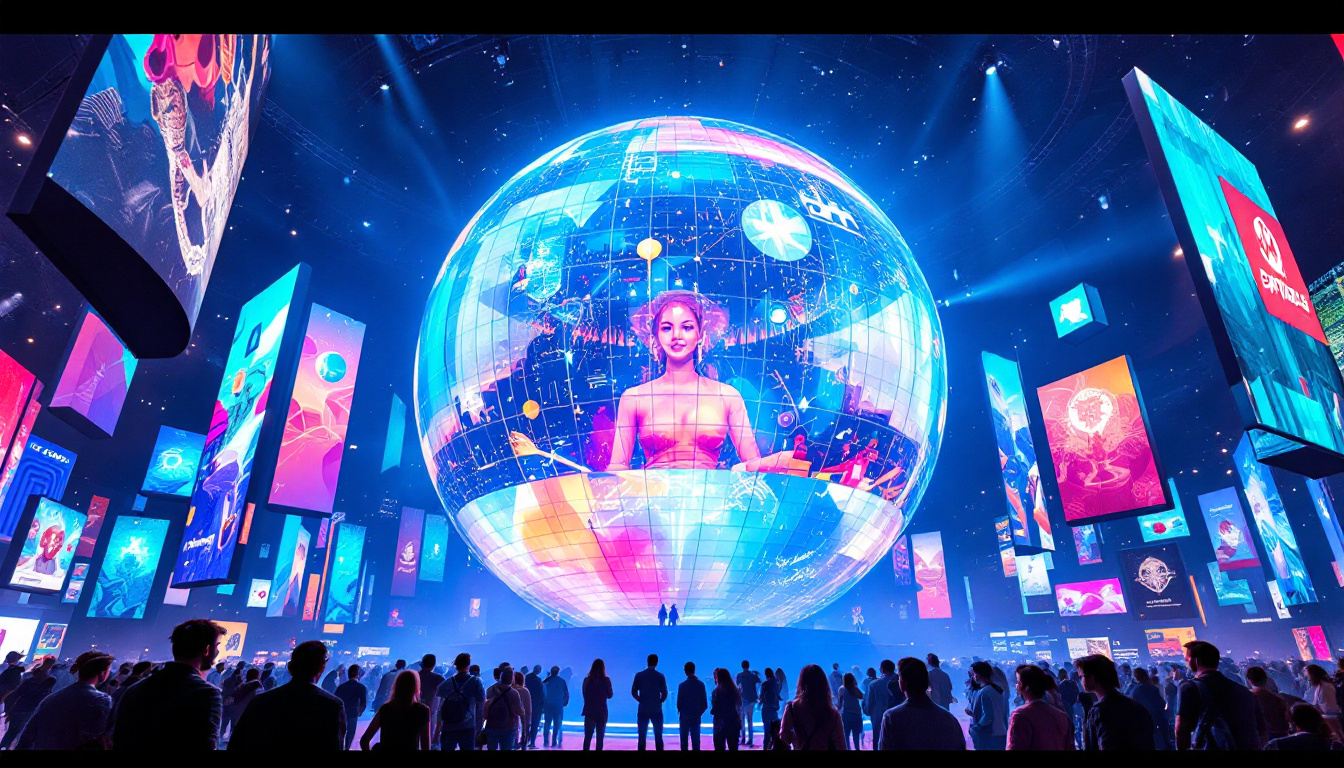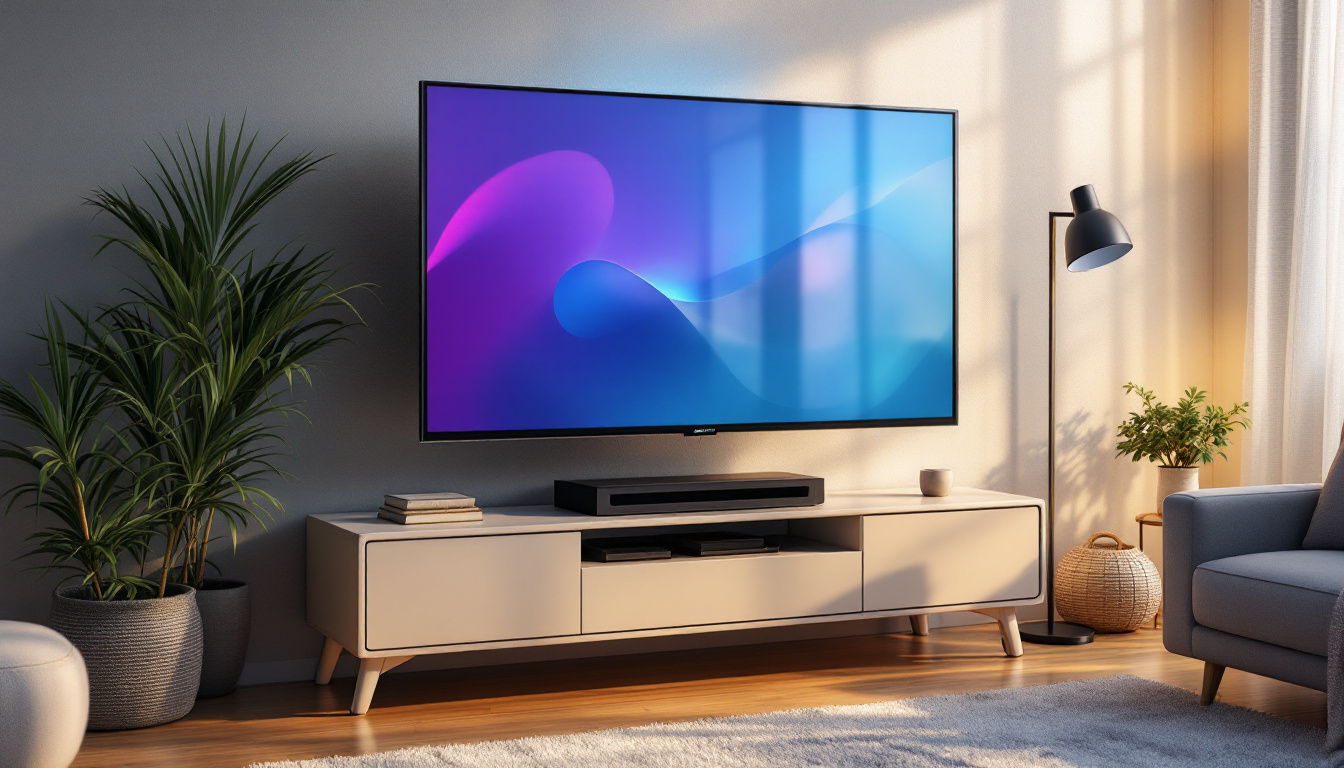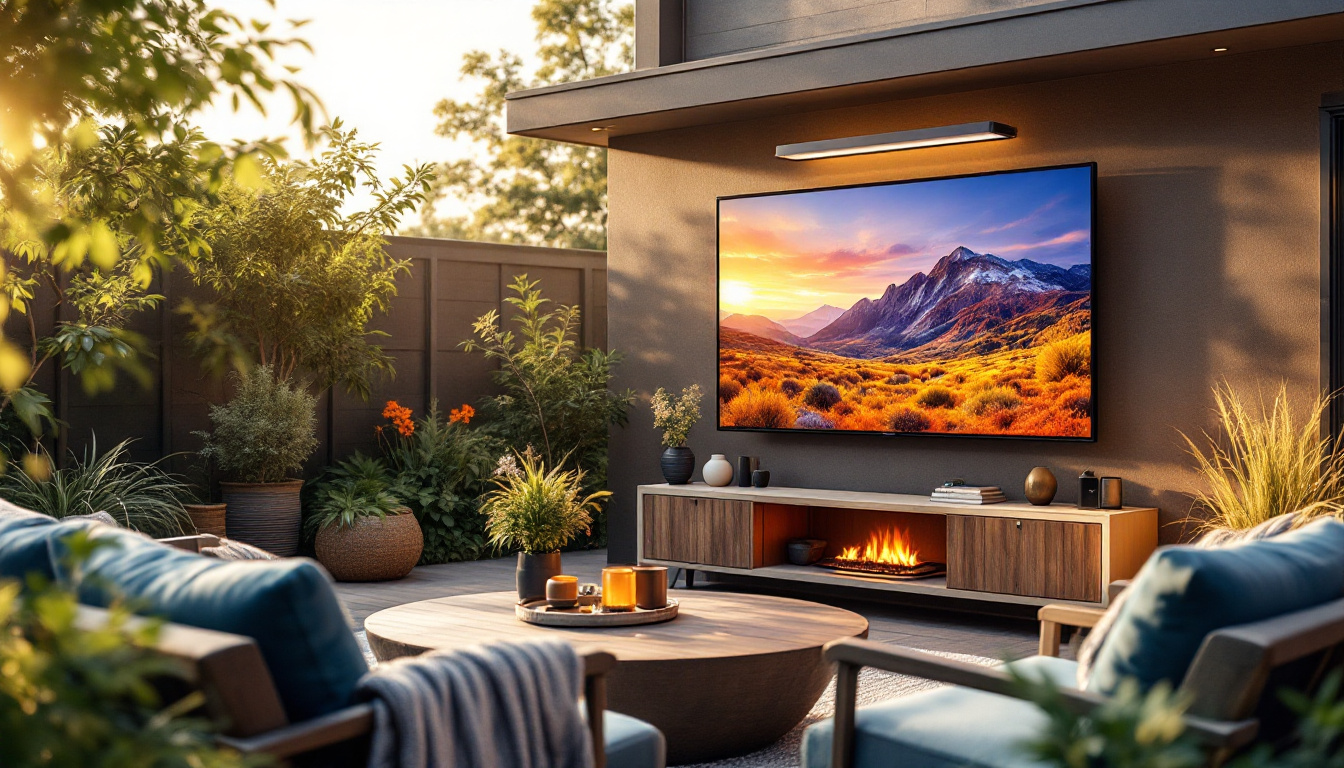In today’s fast-paced digital world, LED displays have become a cornerstone of visual communication. From massive billboards in bustling city centers to the sleek screens in retail stores, LED technology is transforming how information is conveyed. This article delves into the intricacies of LED displays, exploring their technology, applications, and advantages.
Understanding LED Technology
Light Emitting Diodes (LEDs) are semiconductor devices that emit light when an electric current passes through them. Unlike traditional incandescent bulbs, which produce light through heat, LEDs are more energy-efficient and have a longer lifespan. This fundamental difference is what makes LEDs the preferred choice for modern display solutions. The efficiency of LEDs not only reduces energy consumption but also translates to lower electricity bills, making them an economically viable option for both consumers and businesses alike.
How LEDs Work
The operation of an LED involves the movement of electrons within a semiconductor material. When a voltage is applied, electrons recombine with holes within the device, releasing energy in the form of photons—this is the light that we see. The color of the light emitted depends on the materials used in the semiconductor, allowing for a wide spectrum of colors. This versatility in color production has led to the development of various applications, from decorative lighting to functional illumination in automotive and architectural designs.
In LED displays, multiple diodes are arranged in a grid, with each pixel consisting of red, green, and blue (RGB) LEDs. By varying the intensity of these colors, a full range of hues can be produced, enabling vibrant and dynamic visuals. This capability has revolutionized the way we experience media, allowing for immersive environments in gaming, advertising, and even art installations, where light becomes a medium of expression.
Types of LED Displays
LED displays come in various forms, each suited for different applications. The most common types include:
- Direct View LED (DVLED): These displays are made up of individual LED modules that are directly visible to the viewer. They are often used for large outdoor billboards and indoor screens. Their ability to produce bright images even in direct sunlight makes them ideal for advertising in high-traffic areas.
- LED Backlit LCD: This technology uses LEDs to illuminate a liquid crystal display (LCD) panel. It is commonly found in televisions and computer monitors. The use of LED backlighting enhances the contrast ratio and color accuracy of LCDs, providing a better viewing experience compared to traditional fluorescent backlighting.
- Organic LED (OLED): OLED displays utilize organic compounds that emit light when an electric current is applied. They are known for their superior contrast and color accuracy, making them popular in high-end televisions and smartphones. Additionally, OLED technology allows for thinner and more flexible screens, paving the way for innovative designs in consumer electronics.
Another emerging type is MicroLED, which consists of microscopic LEDs that can be used to create displays with exceptional brightness and color fidelity. MicroLED technology holds the promise of self-emissive displays similar to OLED but with improved longevity and efficiency. This makes it a strong contender for the next generation of display technology, potentially transforming everything from personal devices to large-scale installations.
Applications of LED Displays
LED displays are versatile and can be found in a multitude of settings. Their adaptability and effectiveness make them suitable for both indoor and outdoor applications.
Advertising and Marketing
One of the most prominent uses of LED displays is in advertising. digital billboards and signage have revolutionized the marketing landscape, allowing businesses to showcase their products and services dynamically. The ability to change content easily and frequently means that advertisers can tailor their messages to specific audiences and times, maximizing engagement.
Moreover, LED displays can attract attention due to their brightness and vivid colors, making them more effective than traditional static signs. This capability has led to increased foot traffic and sales for many businesses.
Events and Entertainment
In the realm of events and entertainment, LED displays have become essential. Concerts, sports events, and festivals utilize large LED screens to enhance the audience experience. These displays provide real-time visuals, including live feeds, graphics, and animations, ensuring that attendees remain engaged.
Additionally, LED technology allows for creative stage designs. From immersive environments to stunning backdrops, the flexibility of LED displays enables event organizers to push the boundaries of visual storytelling.
Transportation and Public Information
LED displays are increasingly being integrated into transportation systems. Train stations, airports, and bus terminals utilize LED screens to provide real-time information to passengers. Flight schedules, arrival and departure times, and emergency alerts can be displayed clearly and effectively, ensuring that travelers are well-informed.
Furthermore, in urban areas, LED displays are used for public announcements, safety alerts, and community information. Their visibility and adaptability make them an ideal choice for conveying important messages to the public.
Advantages of LED Displays
The rise of LED displays can be attributed to their numerous advantages over traditional display technologies. Understanding these benefits can help businesses and organizations make informed decisions when investing in visual communication solutions.
Energy Efficiency
One of the most significant advantages of LED displays is their energy efficiency. LEDs consume less power compared to traditional lighting technologies, resulting in lower electricity bills and a reduced carbon footprint. This efficiency is particularly beneficial for large installations, such as outdoor billboards, where energy consumption can be substantial.
Additionally, many LED displays are designed with advanced technologies that further enhance energy savings, such as automatic brightness adjustment based on ambient light conditions.
Longevity and Durability
LED displays are known for their long lifespan, often lasting up to 100,000 hours or more. This durability means that businesses can enjoy a reliable display without the frequent need for replacements. Moreover, LEDs are resistant to shock, vibrations, and temperature fluctuations, making them suitable for a variety of environments, including outdoor settings.
In contrast, traditional displays may suffer from burn-in issues or require more frequent maintenance, leading to higher costs over time.
High-Quality Visuals
LED displays offer superior image quality, with high brightness levels, excellent contrast ratios, and vibrant colors. This quality is essential for capturing attention and conveying messages effectively. The ability to display high-definition content ensures that visuals are sharp and clear, enhancing the overall viewer experience.
Furthermore, advancements in technology have led to the development of finer pixel pitches, allowing for closer viewing distances without sacrificing image quality. This capability is particularly important for indoor applications, such as retail environments and corporate presentations.
Challenges and Considerations
While LED displays offer numerous benefits, there are also challenges and considerations that must be addressed. Understanding these factors can help organizations make informed decisions when implementing LED technology.
Initial Investment Costs
One of the primary challenges associated with LED displays is the initial investment cost. High-quality LED screens can be expensive, and the upfront costs may deter some businesses from making the switch. However, it is essential to consider the long-term savings associated with energy efficiency and reduced maintenance costs.
Many organizations find that the return on investment (ROI) justifies the initial expenditure, particularly when considering the enhanced visibility and engagement that LED displays provide.
Technical Expertise
Implementing LED technology may require specialized knowledge and expertise. Organizations may need to invest in training for staff or hire external professionals to ensure proper installation and maintenance. This requirement can add to the overall cost and complexity of the project.
However, many LED display manufacturers offer support and resources to assist with installation and ongoing maintenance, helping to mitigate these challenges.
Environmental Considerations
While LED displays are more energy-efficient than traditional technologies, it is essential to consider their environmental impact. The production and disposal of electronic components can contribute to electronic waste. Organizations should seek out manufacturers that prioritize sustainability and offer recycling programs for end-of-life products.
By choosing environmentally responsible options, businesses can further enhance their commitment to sustainability while enjoying the benefits of LED technology.
The Future of LED Displays
The future of LED displays looks promising, with ongoing advancements in technology and increasing adoption across various industries. As innovation continues, several trends are emerging that will shape the landscape of LED displays in the coming years.
Integration with Smart Technology
As smart technology becomes more prevalent, LED displays are increasingly being integrated with IoT (Internet of Things) systems. This integration allows for real-time data sharing, enabling displays to adjust content based on audience behavior, weather conditions, or other factors.
For instance, retail stores can use smart LED displays to showcase promotions based on customer traffic patterns, enhancing the shopping experience and driving sales.
Advancements in Display Quality
Continued research and development are leading to improvements in display quality. Innovations such as MicroLED technology promise to deliver even higher resolution and brightness levels while maintaining energy efficiency. As these technologies mature, they will likely become more accessible, further expanding the applications of LED displays.
Additionally, the development of transparent and flexible LED displays opens up new possibilities for creative installations in architecture and design.
Increased Focus on Sustainability
As environmental concerns grow, the LED display industry is placing a greater emphasis on sustainability. Manufacturers are exploring eco-friendly materials and production processes, as well as recycling programs for old displays. This focus on sustainability aligns with the broader trend of corporate responsibility, where businesses are expected to minimize their environmental impact.
By prioritizing sustainable practices, the LED display industry can contribute to a greener future while continuing to innovate and meet the demands of modern visual communication.
Conclusion
LED displays have revolutionized the way information is presented and consumed. Their energy efficiency, longevity, and high-quality visuals make them an ideal choice for a wide range of applications, from advertising to public information. While challenges exist, the benefits far outweigh the drawbacks, making LED technology a worthwhile investment for organizations looking to enhance their visual communication.
As the industry continues to evolve, the future of LED displays promises even more exciting advancements. With a focus on smart integration, improved display quality, and sustainability, LED technology is poised to remain at the forefront of visual communication for years to come.
Explore Cutting-Edge LED Displays with LumenMatrix
Ready to elevate your visual communication with the latest in LED display technology? LumenMatrix offers a comprehensive range of innovative LED display solutions tailored to your needs. From Indoor and Outdoor LED Wall Displays to specialized options like Vehicle, Sports, and Floor LED Displays, our products are designed to captivate your audience and amplify your message. Experience the future of digital signage with our Custom, All-in-One, and Transparent LED Displays. Check out LumenMatrix LED Display Solutions today and transform your space into a dynamic visual experience.


